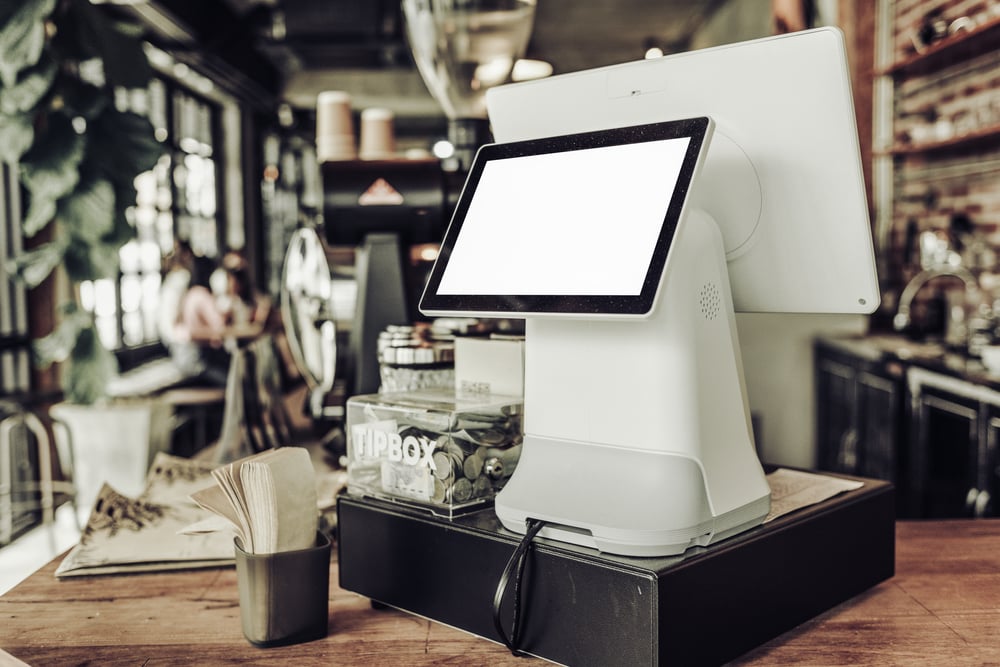Restaurant owners and managers always seek more efficient ways to run their venues. In the digital age, the tools available to hospitality businesses are advancing rapidly.
To run your business as effectively as possible, you need to have a strong tech stack. That's why we've rounded up this guide to the top automation tools for your business.
Find the new system you need to help your restaurant thrive.
Benefits of restaurant automation
Automation tools can improve restaurant operations in several ways:
1. Faster service
Efficient restaurant operations allow your customers to get served quickly. The restaurant industry is hyper-competitive, and excessive wait times for food are detrimental to your customer's satisfaction. Faster service means customers are more likely to return to your venue.
2. Better food
Improved efficiency doesn't just mean that customers get food more quickly. It can also mean their food is better.
For example, tools like kitchen display systems can be used to help your chefs keep track of orders. It can reduce stress in the kitchen and prevent cooking mishaps. These automated systems offer your guests a better dining experience.
3. Cost savings
Profit margins for restaurants are notoriously slim. Automation technology represents an excellent opportunity for venues to reduce expenses like labour costs.
4. Greater consistency
Restaurant automation tools can significantly help to reduce human error in restaurants. This can result in all-around superior dining experiences for your customers. With more consistent levels of service, diners are incentivised to return because they know what they will get each time.
15 restaurant automation tools
It is important to constantly refresh your knowledge and understanding of automation technology. We've assembled 15 types of restaurant automation tools you need to be aware of to help optimise and grow your business.
1. Table management systems
Table management systems help you optimise your customers' booking journeys and keep service running smoothly. Tools like ResDiary enable you to automatically control the flow of bookings to your restaurant.
You can set smart rules, meaning your diary won't accept any bookings that don't meet the conditions you set. Your team can easily analyse restaurant capacity, and gain deeper insights into your venue with built-in analytics features.
ResDiary also boasts a wide array of integrations to optimise your operations. These range from best-in-class point of sale (POS) systems like PowerEPOS to efficient marketing tools like Silverstreet.
Abandoning your paper diary and introducing a table management system is the perfect starting point for levelling up automation in your business.
2. Customer relationship management software
Want more efficient and effective ways to understand and communicate with your customers? Customer relationship management (CRM) tools are perfect for your business.
These tools allow you to automate processes like segmenting your customers and sending out marketing communications. ResDiary integrates with nollie, an AI-powered CRM tool that offers significant automation features for your business.
With nollie, you can easily segment customers based on preferred menu items, spending patterns and visitation frequency. Based on this segmentation, nollie can generate campaigns and messaging targeting your diners. This allows you to deliver personalised communications to your customers at scale.
When integrated with ResDiary, you can automatically share your customer's booking information with nollie. This allows you to generate communications and marketing campaigns that are even more effectively tailored for your diners.
nollie also integrates with your POS system, so spending data is also available to use for diner management.
3. Marketing solutions
Driving more foot traffic to your venue is critical for success. But marketing your venue can be costly and time-consuming without the right automation tools.
That's why ResDiary offers built-in email marketing software to help entice customers to your venue. These emails can be automatically triggered for booking confirmations and dining follow-ups, allowing you to maintain a consistent flow of communication with your customers.
With ResDiary, you can also maintain a database of customer emails to reach out to. Our email marketing solution makes it easy to create branded communications enticing diners to come back. Plus, you can rely on our promotions feature to develop deals customers can't resist.
Want to reach customers over SMS as well as email? Our integration with Silverstreet can be used to deliver automated text messages to your customers. This gives you an additional channel to connect with your diners and keep them returning to your venue.
When paired with nollie, the effectiveness of these marketing efforts is multiplied. By accounting for your customer preferences, you're able to produce marketing materials that speak to their wants and needs directly.
nollie even uses AI to produce its own marketing materials. It works in tandem with tools like ResDiary to promote your business more effectively than ever.
4. Online ordering systems
Online ordering is a critical method for your business to build more revenue.
Automation can be implemented into online ordering systems in a number of ways. Consider using a POS system that integrates online orders and in-house orders. This helps your system run smoothly and makes it easier to reconcile sales data.
You can use inventory management software to simplify online ordering processes. With the right online ordering system, managing workflows for employees is also made easier.
Online systems can also reduce the need for customers to ring up to place their orders. Some restaurants utilise an online menu or a first-party app. These allow customers to make orders with zero activity required on your venue's end.
For more information, check out our complete guide to online ordering systems.
5. Online table ordering
Online ordering can also be implemented for customers inside your restaurant. This generally involves a QR code that takes customers to an online menu. From there, they are able to order and pay.
For some customers, an online table ordering process might be a simple preference. For others, it is a vital way to make the dining experience more accessible. This goes for customers who live with conditions that affect their speech.
Online table ordering can be an excellent way to give a superior experience for your diners. It can also help streamline operations in your venue.
With online table ordering, your waitstaff can save time going between tables. This frees them up to spend more time on other tasks, and can even reduce your labour costs.
6. Automated feedback collection
Want to get more insights from your customers as to how your business can improve? Feedback collection is easily automated, and serves as an excellent way to find out what your customers want from your business.
Through customer feedback, you'll learn what you're doing well and where diners want to see you improve. Collecting customer feedback can lead to some vital changes in your business that can set you on a path to greater success.
Getting feedback from your customers is easy with ResDiary. With automatic dining follow-up emails, you can request feedback from customers in the form of survey links. You can also provide links to review platforms, increasing your number of online reviews.
With a set-and-forget solution, you can request feedback from every single customer that comes through your doors.
For more information on getting customer feedback through emails, check out our email marketing templates guide.
7. Digital kiosks
Another option for automated ordering within restaurants is digital kiosks. Digital self-service kiosks allow customers to place orders via a large touchscreen. They are often seen in quick-service restaurants.
Studies indicate that customers place orders more quickly and accurately via digital kiosks. They may also be incentivised to spend more.
Having digital kiosks as an option in restaurants can improve customer satisfaction. Research indicates that 30% of customers would prefer to order from a kiosk than a human employee if the lines were of equal length.
Digital kiosks also have the benefit of reducing the workload on your front-of-house staff. This enables restaurants to reduce certain operational costs.
8. Automated phone systems
When your restaurant is utterly frantic on a Saturday night, the last thing you want to hear is a ringing phone. It's crucial to allow customers to make bookings and orders over the phone. But taking time away from tasks in your restaurant to answer calls is often burdensome.
Many restaurants choose to rely on automated phone systems for this reason. When your restaurant is too busy to answer the phone, these systems step in to take bookings.
That's why ResDiary offers ResPhone. This automated phone service takes calls when your team is too busy.
ResPhone integrates directly with your booking diary. It fetches availability and automatically reserves tables for customers.
It's the perfect tool to automate away one of the more tiresome parts of restaurant management.
9. Cloud-based EPOS systems
Other EPOS systems store information on a singular computer or machine. Cloud-based EPOS systems use the Internet for improved functionality and data collection.
They can help advanced data collection take place more easily. This helps identify popular dishes and simplifies inventory management.
Cloud-based systems allow you to use different EPOS machines with a central connection. You can have your systems set up at reception, the bar and the dining room. All systems will be subject to the same real-time updates and can send data easily.
You can make the most of your cloud-based EPOS system by integrating it with your table management system. ResDiary integrates with EPOS systems including PowerEPOS to maximise the potential of both tools.
With two-way data flow, you're able to make the most of sales, booking and customer data. Using ResDiary's analytics suite, you can glean the most powerful insights from this data to optimise your business.
10. POS displays
Another useful tool that can be integrated into your venue is a POS display. These are screens that show what is being put into the POS system to the customer.
This removes the need for your employees to repeat a customer's order back to them. They can see how each element of their order contributes to the final price. Sales taxes and surcharges are also tracked.
POS displays are an excellent way to streamline the customer interaction process. They improve transparency with your diners and ensure orders are taken accurately.
11. Kitchen display systems
Once your orders have been recorded perfectly thanks to a cloud-based POS system, how can you ensure they reach your kitchen with no hiccoughs along the way? The answer is a kitchen display system.
Kitchen display systems replace the need for handwritten order tickets. They generally integrate with POS systems to display orders within the kitchen.
Kitchen display systems help to remove human error from taking orders to the back-of-house. They also reduce time spent communicating between these areas of your restaurant. This gives each section more time to focus on its core tasks.
12. Robot waiters
Once the product of science fiction, robot waiters are now a reality in the food industry.
However, the current functionality of robot waiters is somewhat limited. Most models specialise in delivering food to tables with trays.
However, some developers are pushing the technology forward. Recent innovations include on-screen ordering and the ability to interact with guests.
Robot waiters are often made available to restaurants via leasing programs. These programs are often far cheaper than the price of a human employee.
As a result, you can use robot waiters to lower your labour costs. This increases your restaurant's profit margins.
This technology is still in its early stages. As a result, your human front-of-house employees will still be a necessity for some time. For more information, check out our complete guide to robot waiters.
13. Robotic chefs
Why limit cybernetic assistance to front-of-house operations? Just as robots have been developed to help replicate the role of waitstaff, they can also be used in the kitchen.
Here is a quick overview of some robotic chefs currently on the market:
- Flippy: The Flippy Fry Station is used to make French fries and other fried products. This AI-powered product is used in American fast-food franchises such as White Castle. It has a rental price of USD$5,400 per month.
- Moley Kitchen: A far more advanced robotic chef system is designed by Moley Robotics. Moley produces a range of models capable of cooking thousands of recipes. Entry-level prices for Moley devices are in excess of USD$100,000.
- OctoChef: This food preparation robot is designed by the Japanese company Connected Robotics. It is designed to make the popular street snack takoyaki.
These fees might be prohibitively expensive for your restaurant. But if you can find ways to implement them in your venue, it could reduce your back-of-house operation costs.
The full disruptive potential of robotic chefs has not quite arrived. However, it is worth considering how you can start implementing them in your venue early.
14. Generative AI tools
Artificial intelligence represents a major leap forward in the world of automation. It provides entirely new realms with which industries can digitise creative and repetitive tasks alike.
Some of the most impactful tools you can use are generative AI. This includes tools like ChatGPT and Claude to help with written content creation. You can also turn your words into imagery with tools like Midjourney and DALL-E 2.
An effective way to use AI in your restaurant is through nollie. nollie can be used to generate marketing campaigns in your business. Once you have established your customer segments, it can automatically create the content you need to appeal to them.
While the long-term impacts of generative AI on hospitality could be truly staggering, there is plenty of functionality to take advantage of right now. For more information, check out our complete guide to AI in restaurants.
15. Scheduling and payroll software
Smart and effective labour management is essential in a well-functioning restaurant. Scheduling and payroll software provides vital automation features for your business.
Employee scheduling software helps you develop better staff rosters. These tools take into account relevant information like staff availability and booking data to automatically create the right rosters for you.
These tools also often include payroll features. Based on your data of staff working hours, these tools can automatically pay your staff. This software manages areas such as award rates and leave entitlements.
Scheduling and payroll software helps lessen your administrative workload, giving you more time to focus on the things that matter.
Enjoy the benefits of automation with ResDiary
Staying one step ahead of the competition is always top of mind for any restaurant. ResDiary is the perfect starting point.
Digital table management helps make your inefficient paper diary a thing of the past. ResDiary also includes a free, built-in email marketing solution to help you handle customer communications.
You can also make use of ResPhone, an automated phone service. We also offer over 60 integrations including an array of advanced EPOS systems.
In addition, ResDiary integrates with nollie, a game-changing AI CRM. Use your booking and customer data to power your diner management, generating irresistible marketing material and gaining more repeat visitors.
Book a free demo today to uncover all the ways ResDiary can set your venue up for success.



